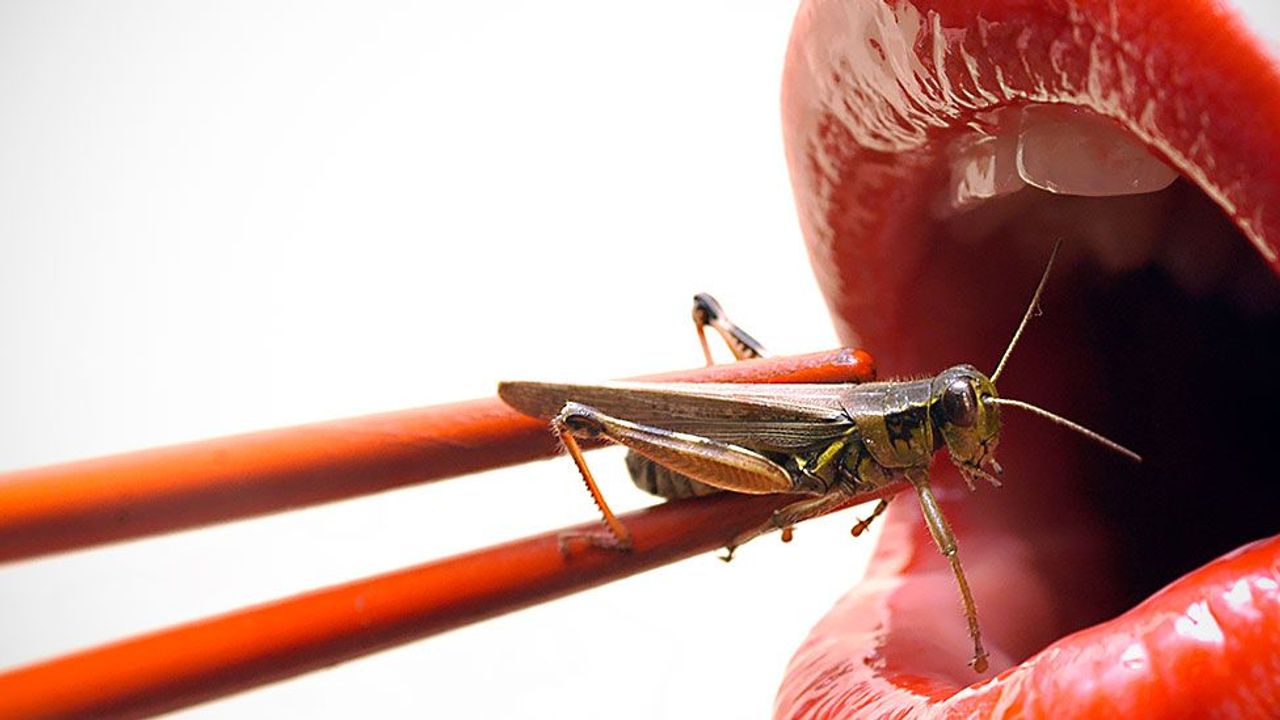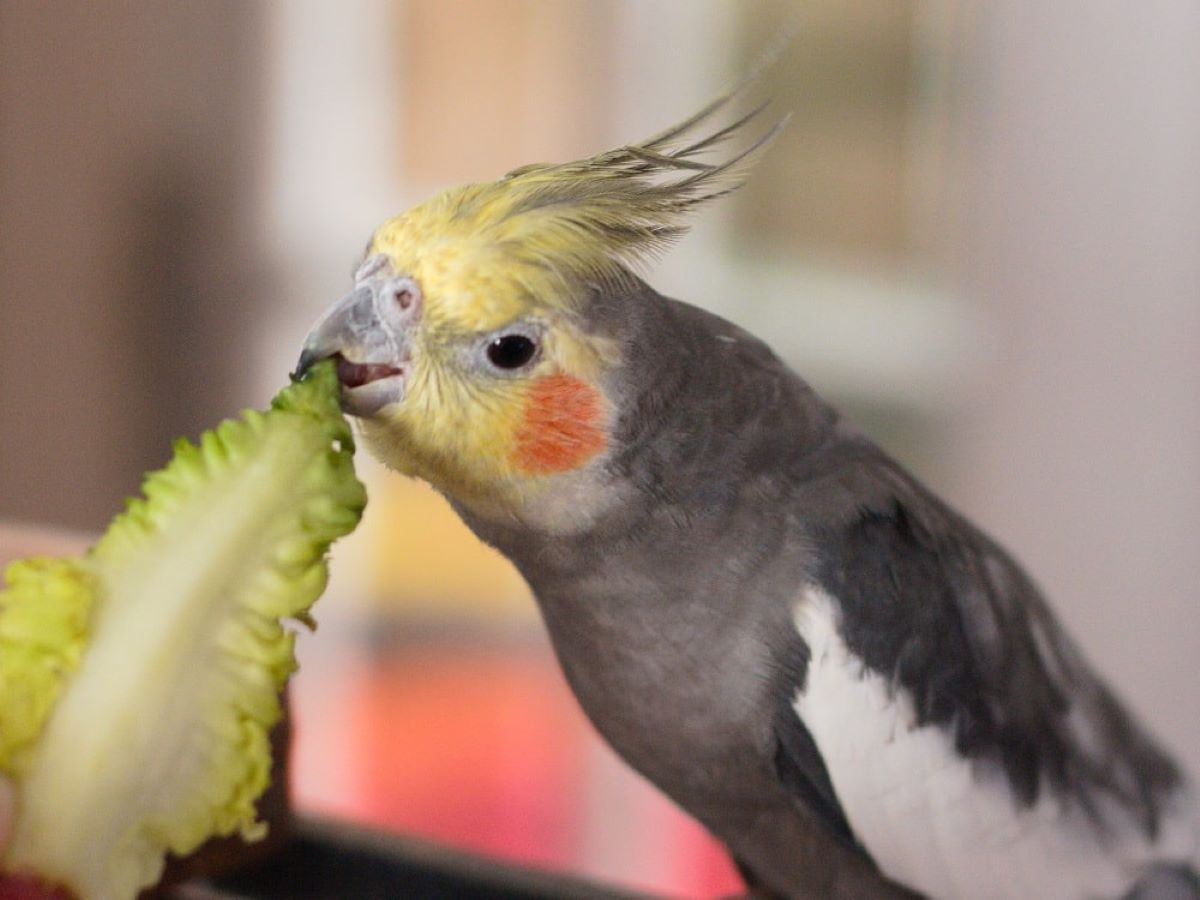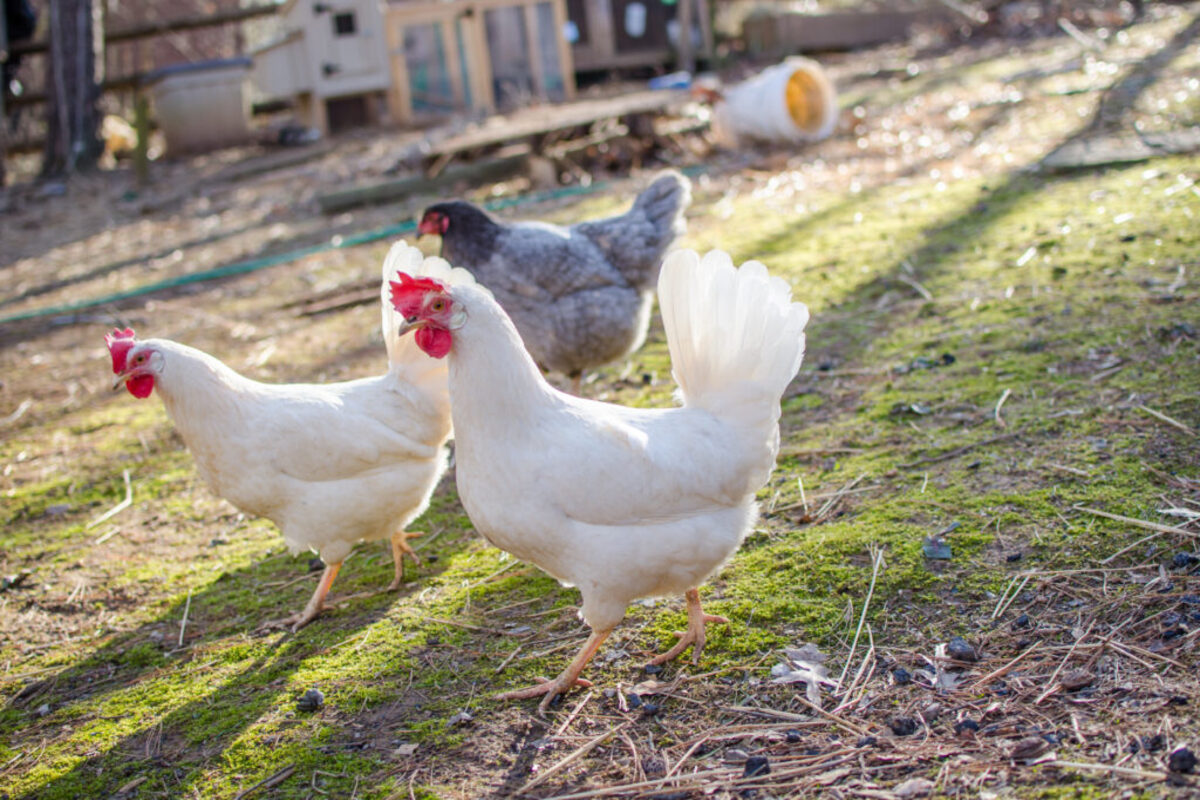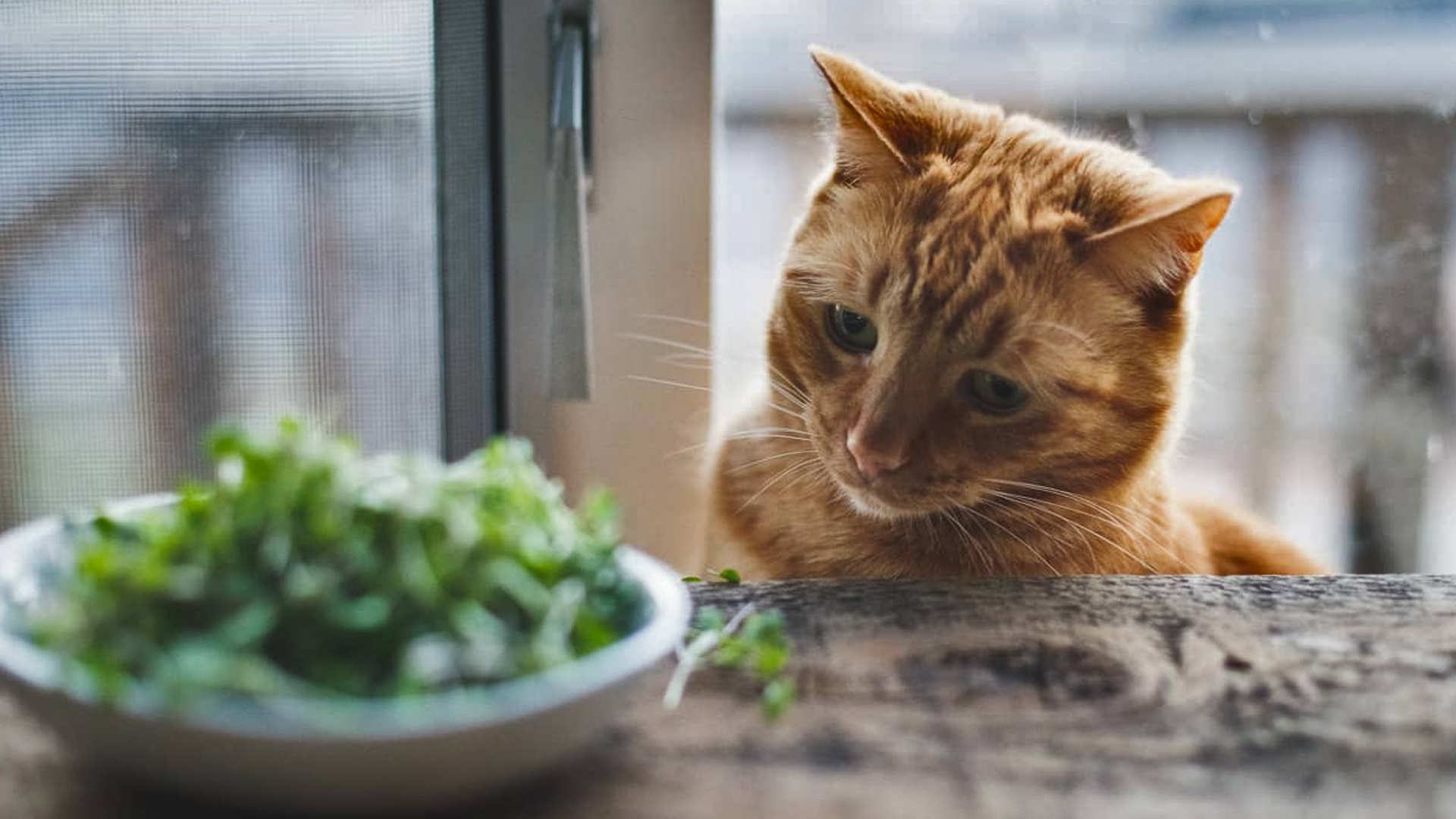Home>Gardening News and Trends>Latest News>What Insects Can You Eat


Latest News
What Insects Can You Eat
Modified: January 22, 2024
Discover the latest news on what insects you can eat and explore the exciting world of edible insects. Expand your culinary horizons with this unique and sustainable food source.
(Many of the links in this article redirect to a specific reviewed product. Your purchase of these products through affiliate links helps to generate commission for Chicagolandgardening.com, at no extra cost. Learn more)
Table of Contents
Introduction
Welcome to the fascinating world of entomophagy, the practice of eating insects. While it may seem unconventional to some, consuming insects as a source of nutrition and sustenance has been a part of human culture for centuries. Today, this age-old tradition is gaining attention from food enthusiasts, environmentalists, and health-conscious individuals alike.
Why eat insects, you may wonder? Well, there are several compelling reasons. Firstly, insects are a highly sustainable and eco-friendly protein source. They require significantly less land, water, and feed than traditional livestock, making them a more environmentally friendly alternative. Furthermore, insects are highly nutritious, packed with essential vitamins, minerals, and proteins. In fact, some species of insects contain higher protein levels than beef or chicken.
Around the world, numerous cultures have embraced the consumption of insects as a regular part of their diet. For example, in certain regions of Africa, termites are considered a delicacy and are often roasted or fried. In Mexico, chapulines (grasshoppers) are commonly enjoyed as a snack, while in Thailand, fried silkworm pupae are a popular street food. These examples demonstrate the wide variety of edible insects and the culinary potential they hold.
From a culinary perspective, insects offer a unique and exciting flavor profile. Each insect species has its own distinct taste, ranging from nutty to earthy or even tangy. With the right preparation and seasoning, insects can be transformed into flavorful dishes that can be incorporated into various cuisines. Chefs around the world are experimenting with insect-based recipes, from cricket tacos to mealworm burgers, showcasing the versatility of these tiny critters in the kitchen.
Before delving into the world of insect consumption, it’s important to understand the safety considerations. While the vast majority of edible insects are safe for consumption, it is crucial to ensure that they are sourced from reputable and regulated suppliers. Additionally, individuals with shellfish allergies should exercise caution when consuming certain insects, as they may trigger similar allergic reactions.
This article aims to provide an in-depth look into the world of insects as a food source. We will explore the nutritional benefits of eating insects, discuss popular edible insect species, highlight their culinary uses, and delve into the sustainable and environmental advantages of insect consumption. In addition, we will examine the cultural attitudes towards insect consumption and address any safety concerns. So, grab your adventurous spirit, and let’s embark on this intriguing culinary journey together!
Why Eat Insects?
In recent years, the idea of incorporating insects into our diet has gained traction as a sustainable and nutritious food option. But why should we consider eating insects? Here are several compelling reasons:
- Sustainability: Insects are incredibly sustainable compared to traditional livestock. They require minimal space, water, and feed to thrive, making them a more environmentally friendly protein source. Additionally, insects have a higher feed conversion rate, meaning they convert their food into body mass more efficiently than larger animals.
- Low environmental impact: The production of insect protein generates significantly fewer greenhouse gas emissions, such as methane and carbon dioxide, compared to cattle farming. By incorporating insects into our diet, we can reduce our carbon footprint and contribute to a more sustainable future.
- Nutritional powerhouse: Despite their small size, insects are packed with essential nutrients. They contain high levels of quality protein, healthy fats, vitamins, and minerals. For example, crickets are rich in iron, calcium, B vitamins, and omega-3 fatty acids. Incorporating insects into our diet can help us meet our daily nutritional requirements more sustainably.
- Alternative protein source: As the global population continues to grow, finding alternative protein sources becomes crucial. Insects have the potential to address the growing demand for protein while mitigating the environmental impact. Moreover, insect farming requires significantly less land and water compared to traditional livestock farming.
- Cultural appreciation: In many cultures around the world, consuming insects is a long-standing tradition. By embracing insects as a food source, we can honor and preserve cultural heritage while also expanding our culinary horizons. It provides an opportunity to explore new flavors, textures, and culinary techniques.
- Promoting biodiversity: Incorporating insects into our diet supports biodiversity conservation. Many edible insects, such as crickets and mealworms, can be farmed using food waste, reducing landfill waste and contributing to a circular economy. Additionally, consuming insects helps shift the demand away from overexploited traditional protein sources.
As we explore the benefits of eating insects, it’s important to note that the notion of entomophagy is not meant to replace conventional protein sources entirely. Rather, it offers an alternative that can complement existing food systems, promoting greater diversity and sustainability.
Eating insects is not only an act of culinary curiosity but also a responsible choice that can have a positive impact on our planet. By embracing these tiny creatures as a food source, we can create a more sustainable, resilient, and nutritious future for generations to come.
Edible Insects Around the World
The consumption of insects as a food source is deeply rooted in various cultures around the world. While insects may be considered taboo or unconventional in some regions, they are celebrated as a delicacy in others. Let’s take a journey around the globe to explore some of the edible insects enjoyed in different parts of the world:
- Asia: In many Asian countries, insects have long been consumed as part of traditional cuisine. For example, in Thailand, fried insects like crickets, bamboo worms, and silkworm pupae are popular street foods. In China, fried scorpions are a common snack in some regions. In Japan, the larvae of the june beetle, known as “hachinoko,” are enjoyed in various dishes.
- Africa: In several African nations, insects are considered not only a valuable source of nutrition but also a delicacy. In countries like Nigeria and Cameroon, termites are highly prized and are often roasted or ground into flour. In South Africa, mopane worms are a traditional delicacy, usually dried and cooked with spices.
- Latin America: In Mexico, edible insects have been enjoyed since ancient times. Chapulines, which are toasted grasshoppers seasoned with lime and chili, are a popular snack. In Peru, roasted ants called “escamoles” are considered a gourmet food and are often featured in high-end restaurants. Brazil also has a tradition of consuming insects, with the larvae of the palm weevil known as “larvae de coquinho” being a common delicacy.
- Oceania: In Australia, Aboriginal communities have a long history of consuming witchetty grubs, which are the larvae of the cossid moth. Traditionally, these grubs are roasted and enjoyed as a rich source of protein. In New Zealand, the Māori people have a tradition of eating huhu grubs, which are the larvae of the huhu beetle.
- Europe: While insect consumption is not as widespread in Europe compared to other regions, there are still pockets of insect appreciation. In the Nordic countries, mealworms and crickets are used in the production of protein-rich food products like pasta and snacks. In Belgium, deep-fried mealworms and crickets can be found in some specialty food shops and restaurants.
These examples highlight the rich diversity of edible insects present in different cultures. Each region has its own traditional methods of preparation and unique flavor combinations that make these insect dishes a part of their culinary heritage.
As the global interest in edible insects grows, the availability and acceptance of these unconventional food sources are expanding. Insects offer a sustainable and nutritious alternative to traditional protein sources, making them an exciting prospect for the future of food.
Nutritional Benefits of Eating Insects
Despite their small size, insects pack a powerful nutritional punch. They are a rich source of essential nutrients, making them an excellent addition to a balanced diet. Here are some of the key nutritional benefits of including insects in our meals:
- Protein: Insects are a protein powerhouse. They often contain high levels of quality protein, making them a valuable source for muscle growth, repair, and overall body function. For example, crickets can contain up to 65% protein by dry weight, which is comparable to chicken or beef. Protein from insects also tends to be more easily digestible than protein from traditional livestock.
- Healthy Fats: Insects are a good source of healthy fats, including omega-3 and omega-6 fatty acids. These fats play a crucial role in brain function, inflammation regulation, and heart health. Some edible insects, such as mealworms and waxworms, contain a higher proportion of unsaturated fats compared to saturated fats.
- Vitamins and Minerals: Insects offer a wide range of vitamins and minerals essential for our health. They can be rich in iron, zinc, magnesium, calcium, and B vitamins, including vitamin B12, which is especially important for vegetarians and vegans. These nutrients play vital roles in supporting our immune system, energy metabolism, bone health, and overall well-being.
- Fiber: Many insects, such as mealworms and crickets, contain significant amounts of dietary fiber. Fiber is essential for digestive health, promoting regular bowel movements, and maintaining a healthy gut microbiome. Including insects in our diet can provide a natural source of fiber that supports digestive function.
- Amino Acids: Insects are rich in essential amino acids, the building blocks of proteins that our bodies cannot produce on their own. Eating a variety of insects can help ensure a well-rounded amino acid profile, supporting tissue repair, hormone production, and overall growth and development.
It’s important to note that the nutritional composition of insects can vary depending on the species, diet, and rearing conditions. However, overall, insects are a highly nutritious food source that can contribute to a well-rounded and sustainable diet.
As we explore the nutritional benefits of eating insects, it’s essential to consider them as part of a balanced and diverse diet. Incorporating insects alongside other nutrient-rich foods will help ensure a comprehensive intake of all essential nutrients.
The nutritional value of insects, combined with their low environmental impact and high sustainability, makes them a compelling option for our future food choices. By embracing these tiny creatures as a food source, we can nourish our bodies while minimizing our ecological footprint.
Popular Edible Insects
As the popularity of edible insects continues to grow, certain species have emerged as favorites in the culinary world and are readily available for consumption. These popular edible insects offer a unique and exciting addition to various dishes. Let’s explore some of them:
- Crickets: Crickets are perhaps one of the most well-known edible insects. They have a mild, nutty flavor and can be used in a variety of dishes, from savory meals to sweet treats. Crickets can be ground into flour and incorporated into baked goods, used as a crispy topping for salads, or even enjoyed as a protein-rich snack.
- Mealworms: Mealworms are the larvae of darkling beetles and are commonly used in cooking and baking. They have a slightly nutty taste and a chewy texture. Mealworms can be added to stir-fries, used as a filling for stuffed vegetables, or sprinkled on top of soups and salads for an extra protein boost.
- Grasshoppers: Grasshoppers, or chapulines as they are known in Mexico, are a popular delicacy and snack food. They are often seasoned with spices and lime before being roasted or fried. Grasshoppers have a crunchy texture and a slightly earthy and citrusy flavor, making them a tasty addition to tacos, quesadillas, or enjoyed on their own.
- Silkworms: Silkworm larvae have a creamy and slightly nutty flavor. Often used in Asian cuisine, they can be stir-fried, sautéed, or boiled. Silkworm pupae, in particular, are commonly enjoyed in Korea, where they are boiled and seasoned before being served as a protein-rich side dish.
- Beetle Larvae: Beetle larvae, such as waxworms and buffalo worms, have gained popularity as a sustainable protein source. They have a subtle, creamy flavor that blends well with various dishes. Beetle larvae can be used in pasta sauces, added to omelets, or baked into energy bars for a nutritious and insect-infused snack.
- Ants: Several species of ants are also edible and offer a unique flavor profile. Some ants, like lemon ants, have a tangy and citrusy taste, adding a refreshing twist to salads or fruit-based desserts. Other ants, such as leafcutter ants, have a more acidic and savory flavor and can be used as a seasoning or in marinades.
These popular edible insects showcase the diverse flavors, textures, and culinary possibilities that insects offer. With their nutritional benefits and eco-friendly production, incorporating these insect species into our meals can add a touch of adventure and sustainability to our dining experiences.
When venturing into the world of edible insects, it’s important to ensure that they are sourced from reputable suppliers and prepared properly. This ensures both the safety and quality of the insects we consume.
So, why not embrace your adventurous side and give these popular edible insects a try? You might just discover a new culinary delight!
Culinary Uses of Insects
The culinary uses of insects are as diverse as the species themselves. With their unique flavors and textures, insects can be incorporated into a wide range of dishes, adding a touch of novelty and nutritional value. Let’s explore the various culinary applications of edible insects:
- Savory Dishes: Insects can be used as a protein-rich ingredient in savory dishes. They can be stir-fried with vegetables, incorporated into sauces and stews, or used as a filling for dumplings or tacos. For example, crickets and mealworms can add a delightful crunch to salads, and grasshoppers can lend a savory flavor to meat stir-fries.
- Baked Goods: Ground insect flours, such as cricket flour, can be used as an alternative to traditional flour in baking. They can be incorporated into bread, muffins, cookies, and even pastries, providing an extra protein boost and a unique earthy flavor. Insect protein powder can also be added to smoothies and protein bars for a nutritious and sustainable snack.
- Snacks and Appetizers: Insects make for excellent snacks and appetizers. They can be roasted or seasoned with spices, creating crispy and flavorful bites. For instance, roasted crickets or mealworms can be enjoyed as a standalone snack or mixed with nuts and dried fruits for a protein-packed trail mix. Skewered grasshoppers or marinated ant larvae can also be served as unique party appetizers.
- Sauces and Condiments: Insects can be used to infuse unique flavors into sauces, condiments, and marinades. Crushed or ground insects can be added to salad dressings, barbecue sauces, and salsas, providing a hint of umami and a touch of novelty. Ants, with their citrusy and tangy flavor, can be incorporated into citrus-based sauces to add depth and complexity.
- Alternative Protein Products: As the demand for sustainable protein sources grows, insect-based alternative protein products are becoming more prevalent. Insect protein can be transformed into burgers, sausages, and protein bars, offering a nutritious and eco-friendly substitute for traditional meat products. These innovative creations provide a guilt-free way to enjoy the benefits of insect protein.
The culinary uses of insects are limited only by our creativity and willingness to experiment. Chefs and food enthusiasts around the world are exploring new and exciting ways to incorporate insects into their dishes, pushing the boundaries of culinary innovation.
When it comes to preparing insects, it’s important to ensure they are sourced from reputable suppliers and properly cooked or processed to guarantee safety and quality. This includes proper cleaning, cooking, and seasoning techniques to enhance their flavors and ensure a delightful dining experience.
So, whether you’re looking to add some nutritional value to your meals, explore new taste sensations, or contribute to a sustainable food system, consider embracing insects as a culinary ingredient. With their incredible versatility, insects offer a world of gastronomic possibilities waiting to be discovered.
Sustainable and Environmental Benefits of Insect Consumption
Embracing insects as a food source brings forth numerous sustainable and environmental benefits. As our global population continues to rise, it becomes crucial to find alternative protein sources that can meet our growing food demands while mitigating the environmental impact. Here are some of the key sustainable and environmental benefits of insect consumption:
- Reduced Land Use: Insect farming requires significantly less land compared to traditional livestock farming. Insects can be reared in vertical farms or small spaces, minimizing the need for vast agricultural land. By opting for insect protein, we can reduce deforestation and land degradation caused by the expansion of livestock grazing areas.
- Lower Water Footprint: Insects have a substantially lower water footprint compared to traditional livestock. They require significantly less water for rearing and maintenance. For instance, crickets need about six times less water than cattle to produce the same amount of protein. Shifting towards insect consumption can alleviate the strain on freshwater resources, contributing to water conservation efforts.
- Reduced Greenhouse Gas Emissions: Insect farming generates fewer greenhouse gas emissions compared to traditional livestock farming. Insects produce minimal amounts of methane, a potent greenhouse gas, during their digestive processes. Additionally, their small size and shorter reproductive cycles contribute to lower carbon emissions throughout their life cycle.
- Efficient Feed Conversion: Insects have a remarkable ability to convert feed into body mass efficiently. They have a higher feed conversion rate compared to larger animals. For instance, crickets require significantly less feed to produce the same amount of protein compared to cattle. This makes insect farming more resource-efficient, as it requires less feed, land, and water to produce the same nutritional value.
- Circular Economy: Insects can be reared using organic waste materials, creating a circular economy model. Food waste can be used as a feed source for insects, diverting it from landfills and reducing overall waste. This not only minimizes environmental pollution but also contributes to a more sustainable and efficient use of resources.
- Biodiversity Conservation: Adopting insect consumption supports biodiversity conservation efforts. By diversifying our protein sources and incorporating insects into our diet, we lessen the demand for conventional livestock, reducing the pressure on land and ecosystems. Preserving biodiversity is crucial for maintaining ecosystem resilience and promoting overall environmental well-being.
These sustainable and environmental benefits highlight the potential of insects as a responsible and forward-thinking food source. By embracing insect consumption, we can contribute to a more sustainable and resilient food system, reducing our ecological footprint and addressing global food challenges.
As the interest in insects as a food source continues to grow, it is important to ensure that the farming and harvesting practices are conducted in a responsible and regulated manner. This includes adhering to proper feeding protocols, minimizing the use of pesticides, and ensuring the health and welfare of the insects being raised.
By recognizing and harnessing the sustainable and environmental benefits of insect consumption, we can pave the way for a more sustainable, nourishing, and resilient future.
Safety Considerations when Eating Insects
While consuming insects is generally safe, it is important to exercise caution and ensure that proper safety measures are followed. Here are some key safety considerations to keep in mind when incorporating insects into your diet:
- Source: Ensure that the insects you consume come from reputable sources. It is essential to purchase insects from regulated and trusted suppliers that follow appropriate hygiene and handling practices. This reduces the risk of contamination and ensures that the insects are safe for consumption.
- Allergies: Insects, especially certain species like crickets and mealworms, are closely related to shellfish. If you have a known shellfish allergy, it is important to exercise caution when consuming insects as they may trigger similar allergic reactions. If you are unsure about your allergen sensitivity, consult with a healthcare professional before incorporating insects into your diet.
- Preparation: Proper preparation is crucial to ensure the safety of insect consumption. Cooking insects thoroughly eliminates any potential harmful bacteria or parasites. It is recommended to cook insects at a temperature of at least 176°F (80°C) to ensure they are safe for consumption. This can be achieved by roasting, frying, boiling, or baking insects before consuming them.
- Food Hygiene: Follow strict food hygiene practices when handling and preparing insects. Store insects in clean and dry containers to prevent contamination and spoilage. Wash your hands thoroughly before and after handling insects, and ensure that all utensils and surfaces used for preparing insects are properly cleaned and sanitized.
- Regulations: Familiarize yourself with any local regulations or guidelines regarding the consumption of insects. Different regions may have specific rules regarding the farming, sale, and preparation of insects for consumption. It is important to ensure that you comply with these regulations to guarantee the safety and legality of your insect consumption practices.
By following these safety considerations, you can enjoy the benefits of insects as a safe and nutritious food source. It is also important to start gradually when incorporating insects into your diet, allowing your body to adjust and assess any potential reactions or sensitivities.
As with any new food, paying attention to your own body’s response is crucial. If you experience any adverse effects after consuming insects, such as digestive discomfort or allergic reactions, it is important to consult with a healthcare professional.
By approaching the consumption of insects with mindfulness and adherence to safety precautions, you can confidently explore the exciting world of entomophagy.
Cultural Attitudes towards Insect Consumption
Cultural attitudes towards insect consumption vary across different societies and can influence the acceptance and prevalence of entomophagy. While some cultures embrace insects as a traditional part of their cuisine, others may perceive them as unconventional or even taboo. Here we explore the diverse cultural attitudes towards insect consumption:
- Indigenous Communities: Many indigenous communities have a long history of insect consumption and view them as a valuable food source. Insects are often incorporated into traditional dishes and celebrations, passing down cultural knowledge from generation to generation. These communities recognize the nutritional and ecological value of insects and appreciate their sustainable nature.
- Asian Cultures: In many countries in Asia, insects have been consumed for centuries and are deeply entrenched in culinary traditions. Insects, such as crickets, silkworms, and grasshoppers, are often used in cooking and regarded as delicacies. They are valued for their taste, texture, and nutritional benefits, and are enjoyed as both everyday meals and special treats.
- African Regions: Edible insects play a significant role in the dietary habits and cultural practices of many African regions. In countries like Nigeria, Zambia, and Cameroon, insects like termites and caterpillars are considered nutritious and flavorful. They are often incorporated into stews, sauces, and snacks, contributing to the local culinary heritage.
- Latin American Countries: In several Latin American countries, including Mexico and Peru, insects have remained part of the local cuisine since ancient times. Insects like grasshoppers, ants, and larvae are incorporated into various traditional dishes. They are celebrated for their unique flavors and textures and are enjoyed as snacks, fillings, or toppings.
- Western Societies: Insects have traditionally been less accepted as food sources in many Western societies. However, there has been a shift in recent years due to increased awareness of the sustainability and nutritional benefits of insect consumption. There is a growing interest in incorporating insects into the Western diet, with chefs, food enthusiasts, and sustainability advocates promoting their culinary potential.
Attitudes towards insect consumption are influenced by cultural norms, individual preferences, and access to alternative protein sources. As the global conversation around food sustainability grows, more people are recognizing the importance of diversifying protein sources and exploring the potential of insects as a sustainable option.
Changing cultural attitudes towards insect consumption requires education, promotion of culinary innovation, and positive exposure. By embracing and appreciating the cultural practices surrounding insect consumption, we can foster understanding and acceptance in diverse societies worldwide.
As the world continues to globalize, cultural exchange and the sharing of culinary traditions can lead to a greater appreciation for the rich and varied cultural attitudes towards insect consumption.
Conclusion
In conclusion, the practice of eating insects, known as entomophagy, offers a multitude of benefits that span nutritional, environmental, and cultural domains. As we have explored, insects are a highly sustainable protein source, requiring less land, water, and feed compared to traditional livestock. They also provide numerous essential nutrients, including protein, healthy fats, vitamins, and minerals. Insects can be incorporated into a wide range of dishes, from savory meals to baked goods, bringing a unique flavor profile and texture to culinary creations.
Edible insects are celebrated in various cultures around the world, with long-standing traditions and culinary practices. From Asia to Africa, Latin America to Europe, insects have been consumed for generations, contributing to cultural heritage and culinary diversity. While Western societies may have been initially hesitant, there is an increasing recognition of the environmental and nutritional benefits of insect consumption, leading to a growing interest in incorporating insects into the Western diet.
When it comes to consuming insects, safety is paramount. Care should be taken to source insects from reputable suppliers and to follow appropriate food hygiene practices when preparing them. Additionally, individuals with shellfish allergies should exercise caution, as certain insects may trigger similar allergic reactions.
By embracing insects as a food source, we can contribute to a more sustainable future. Insects offer a low environmental impact, reduced greenhouse gas emissions, and efficient feed conversion rates. Incorporating insects into our diets supports biodiversity conservation and fosters a circular economy by utilizing food waste as feed. Moreover, embracing insects honors cultural traditions and fosters cultural exchange.
In conclusion, the world of entomophagy opens up exciting opportunities for sustainable and diverse food choices. By considering insects as a valuable and nutritious ingredient, we can explore new flavors, reduce our ecological footprint, and contribute to a more resilient and inclusive global food system. So, let’s embark on this culinary adventure and discover the wonderful world of edible insects!









